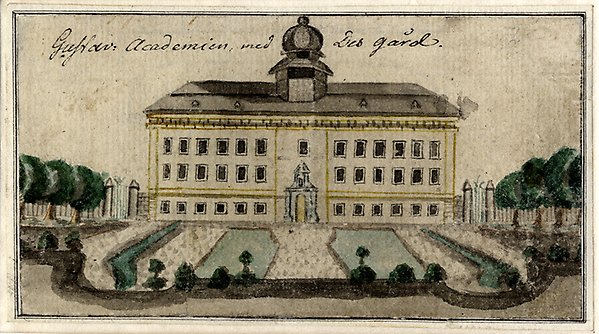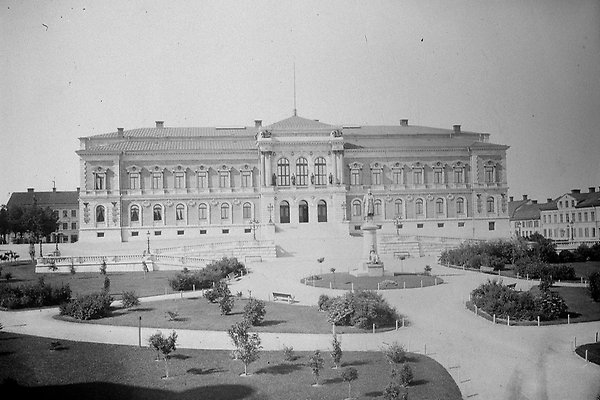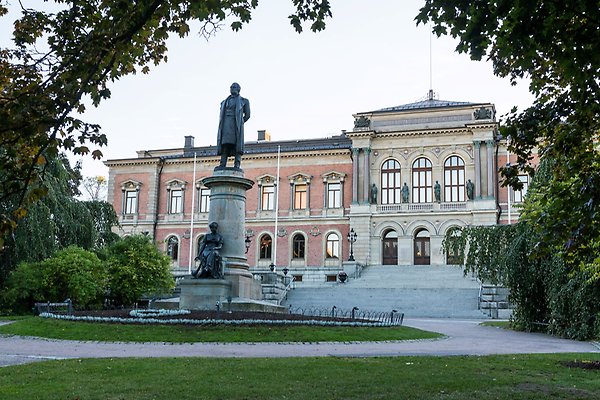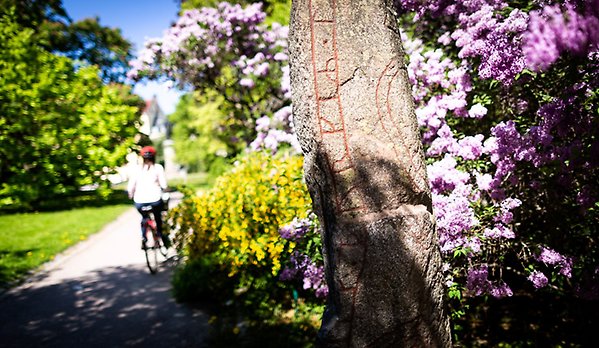History of The University Park
The park in the 18th century
During the 18th century, possibly earlier, there was a garden facility in central Uppsala. Its name at the time was the Gustavian Academy garden. Today, the place is called the University Park.

The Gustavian Academy with its courtyard. The green area rose in terraces towards the exercise yard, which was located where the University Building is now. Painting in ink and watercolor by Johan Gustaf Härstedt, 18th century.
The garden was surrounded by, among other things, walls and a round tower. The tower was called ‘rundel‘ and its name still lives on through the nearby street Rundelsgänd.
For a number of years from 1813 the University occasionally opened the garden to the public. There, people could see demonstrations of gymnastic and athletic skills. One of these was so-called vaulting, i.e. gymnastics on horseback. Other attractions were fencing and laning.
19th century
In the 1880s, the university building was built and the whole garden went through a radical change. Thore Fries, professor of botany and for a period of time vice chancellor of Uppsala University was one of the driving forces behind the renovation. The walls disappeared and the university park got a new look.
The university chose to plant a variety of trees. There was an educational purpose in this. The young would learn to recognize the different types of species. It was with the same intention that the country's nursery schools planted large varieties of trees and shrubs in their gardens.
The University Park, which went through a proper renovation ahead of the University's anniversary in 1977, has retained its basic character since the 1880s.

The University Building and the University Park, 28 July 1890. Photo: Heinrich Osti (1826-1914).
The University Park today
Today there are no walls around the University Park, but it is surrounded by a number of cultural and historical buildings; Gustavianum, the Ekerman Building (Historicum), the relatively new Church of Sweden Building, the Södermanland-Nerike Nation (student social club), the University Main Building, and finally the residence of the Archbishop of the Church of Sweden.

In the center of the Park there is a statue of Erik Gustaf Geijer, a historian and poet (1783–1847). The sculptor John Börjesson captured Geijer as he looked when standing at the lectern, as shown in a contemporary drawing. A female figure sits on the base of the statue, symbolising Geijer’s ‘Thought’. The statue was unveiled on a day in October 1888, in a still sparse park that was totally dominated by the new University Main Building. Photo: David Naylor.

Also worth seeing in the Park are the six runestones, found in the city and in surrounding parishes and moved to this central place to remind sightseers of the wealth of rune stones in the province of Upland. Photo: Mikael Wallerstedt.
